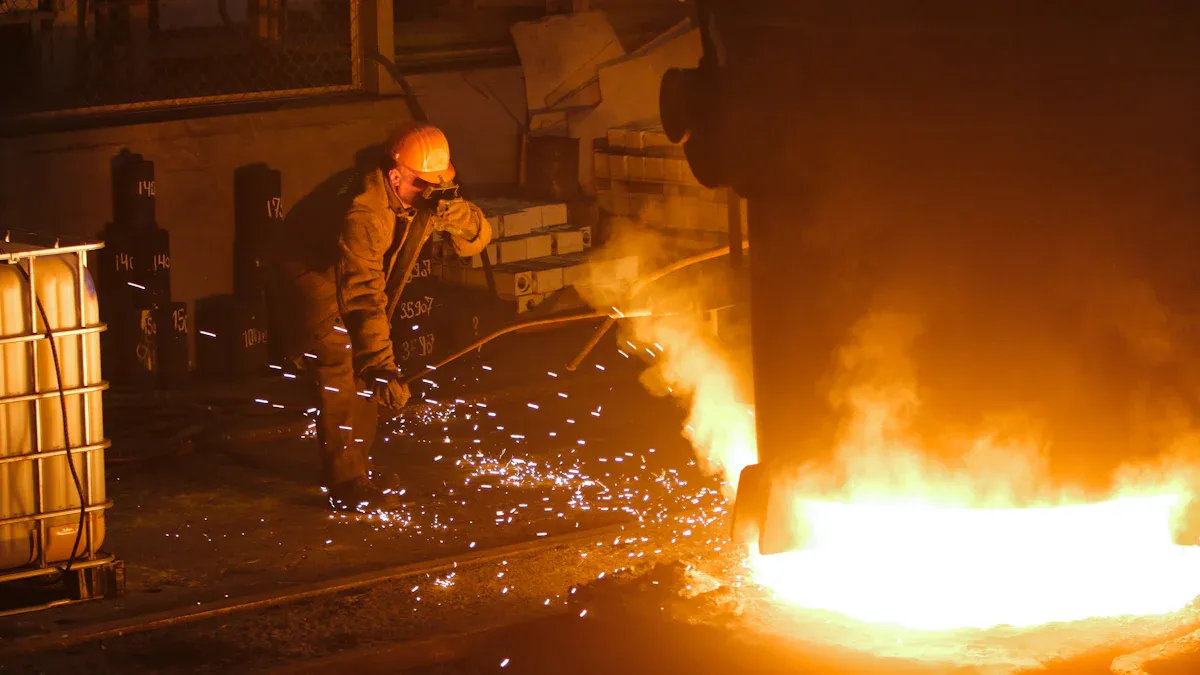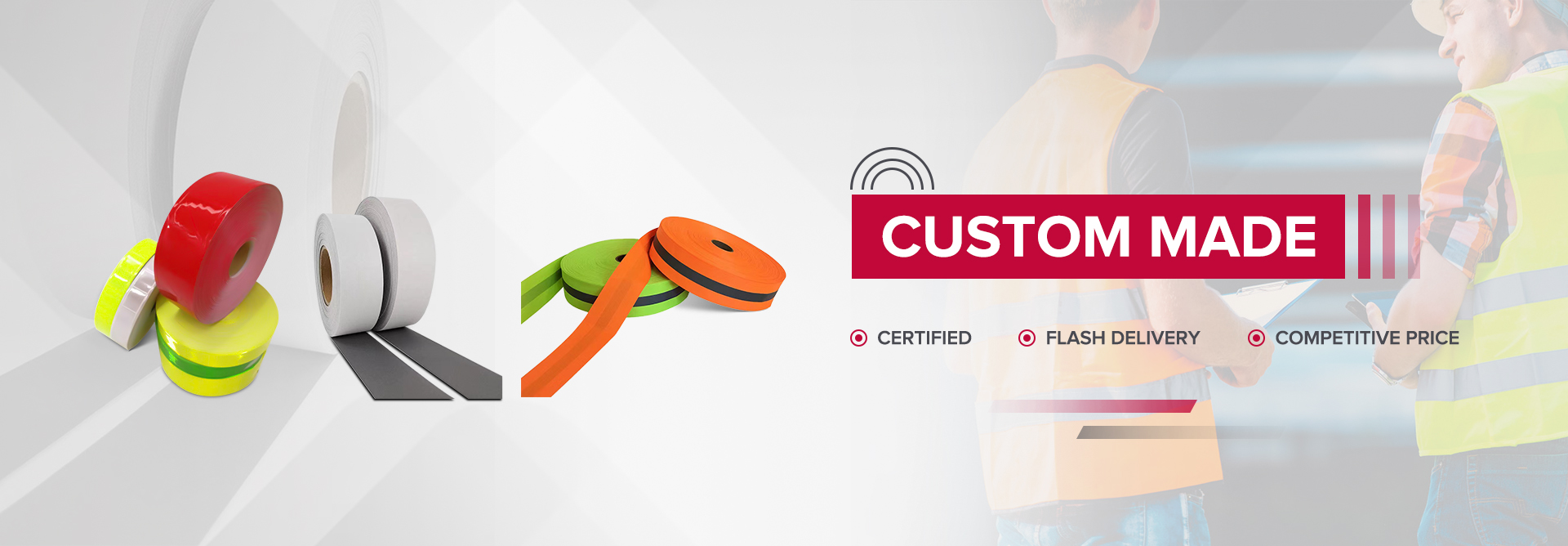
Adhesive velcro tape must meet strict safety standards to protect users from fire hazards. Standards like UL-94 V-0, FAR 25.853, NFPA 2112, ASTM E84, and EN 13501-1 set requirements for flammability and flame resistance. These regulations help manufacturers deliver reliable products for demanding environments.
Key Takeaways
- Fire-resistant adhesive velcro tape must meet strict safety standards like UL-94 V-0 and FAR 25.853 to prevent fire spread and protect users.
- Manufacturers use special flame-retardant materials and adhesives to ensure the tape resists ignition and limits smoke and toxic gases.
- Choosing certified tape helps keep people safe in industries like aviation, transportation, and construction by slowing flames and reducing fire risks.
Safety Standards for Fire-Resistant Adhesive Velcro Tape

UL-94 V-0: Flammability Rating Explained
UL-94 V-0 stands as one of the most recognized flammability ratings for plastic materials. This standard measures how quickly a material stops burning after being exposed to a flame. To achieve a V-0 rating, a sample must extinguish within 10 seconds after two applications of a test flame. No flaming drips can occur. Manufacturers use this test to ensure that adhesive velcro tape will not contribute to the spread of fire in critical environments.
Note: UL-94 V-0 certification gives engineers and safety managers confidence that the product will perform reliably in the event of a fire.
FAR 25.853: Aviation Fire Safety Requirements
FAR 25.853 sets the fire safety requirements for materials used in aircraft interiors. The Federal Aviation Administration (FAA) enforces this regulation to protect passengers and crew. Adhesive velcro tape used in airplanes must pass strict flame, smoke, and heat release tests. These tests simulate real-life fire scenarios inside an aircraft cabin. Only products that meet FAR 25.853 can be installed in commercial and private aircraft.
Key requirements under FAR 25.853:
- Low flame spread
- Minimal smoke emission
- Limited heat release
Aviation suppliers rely on this standard to select safe fastening solutions for seats, panels, and insulation.
NFPA 2112: Industrial Flame Protection
NFPA 2112 focuses on flame-resistant clothing and materials for industrial workplaces. The National Fire Protection Association (NFPA) developed this standard to reduce burn injuries in environments with flash fire hazards. Adhesive velcro tape used in protective gear or equipment must comply with NFPA 2112 to ensure worker safety. The standard requires materials to pass rigorous thermal stability and flame resistance tests.
Tip: Always check for NFPA 2112 compliance when selecting products for oil, gas, or chemical facilities.
ASTM E84 and EN 13501-1: Additional Compliance Standards
ASTM E84 and EN 13501-1 provide further benchmarks for fire performance. ASTM E84, also known as the “Surface Burning Characteristics of Building Materials” test, measures flame spread and smoke development. EN 13501-1 serves as the European standard for classifying the reaction to fire of construction products. Both standards help manufacturers demonstrate that adhesive velcro tape meets global fire safety expectations.
| Standard | Region | Focus Area |
|---|---|---|
| ASTM E84 | North America | Flame spread, smoke development |
| EN 13501-1 | Europe | Reaction to fire classification |
These standards support compliance in construction, transportation, and industrial sectors.
Achieving Fire Resistance in Adhesive Velcro Tape

Materials and Flame-Resistant Adhesives
Manufacturers select base materials that resist ignition and slow flame spread. They often use nylon or polyester with flame-retardant additives. These additives help the tape meet strict safety standards. Flame-resistant adhesives play a key role. They bond securely without increasing fire risk. Some adhesives contain halogen-free compounds to reduce toxic smoke.
Tip: Always check the product label for information about flame-retardant materials and adhesives.
Manufacturing Processes and Treatments
Production teams use specialized processes to enhance fire resistance. They apply chemical treatments to the hook and loop surfaces. These treatments improve the tape’s ability to withstand heat. Some factories use heat-setting techniques to stabilize the fibers. Quality control staff inspect each batch for consistency. They reject any tape that does not meet fire safety requirements.
Common manufacturing steps:
- Add flame-retardant chemicals to raw materials.
- Treat finished tape with fire-resistant coatings.
- Test samples for durability and flame resistance.
Testing Methods and Certification Requirements
Testing labs evaluate adhesive velcro tape using industry-standard methods. They expose samples to open flames and measure burn time. Labs also check for smoke production and toxic emissions. Certification bodies review test results before granting approval. Products must pass all required tests to earn safety labels.
| Test Type | Purpose |
|---|---|
| Flammability | Measures burn rate |
| Smoke Emission | Assesses smoke levels |
| Toxicity | Checks harmful gases |
Products with proper certification offer reliable protection in hazardous environments.
Applications and Compliance Importance for Adhesive Velcro Tape
Aerospace and Aviation Installations
Aerospace engineers use adhesive velcro tape in aircraft cabins, cockpits, and cargo holds. This tape secures panels, insulation, and emergency equipment. Strict fire safety standards, such as FAR 25.853, guide product selection. Airlines trust certified tape to help protect passengers and crew during emergencies.
Automotive and Transportation Safety
Vehicle manufacturers rely on fire-resistant tape for wire harnesses, seat attachments, and interior panels. Buses, trains, and commercial vehicles often require materials that meet flammability standards. Proper compliance helps reduce fire risks in accidents or electrical failures.
Note: Using certified tape in transportation can prevent small fires from spreading quickly.
Industrial, Electrical, and Commercial Uses
Factories and offices use adhesive velcro tape to organize cables, secure equipment, and fasten safety gear. Electrical panels and server rooms benefit from fire-resistant properties. Building managers choose compliant products to meet local fire codes and protect workers.
Common uses include:
- Cable management in control rooms
- Fastening safety signage
- Securing protective covers
How Compliance Protects Users
Compliance with fire safety standards ensures that adhesive velcro tape performs reliably in emergencies. Certified products slow flame spread and limit smoke. This protection gives users more time to respond and evacuate safely. Companies that follow regulations help create safer environments for everyone.
- Certified adhesive velcro tape protects users in hazardous settings.
- Safety standards provide reliable fire resistance for demanding environments.
- Experts recommend checking product certifications and test results before installation.
Choosing the right adhesive velcro tape helps companies maintain safety and compliance.
FAQ
What does “fire-resistant” mean for adhesive velcro tape?
Fire-resistant tape slows down burning and does not spread flames quickly. This feature helps protect people and property during a fire.
How can users verify if velcro tape meets safety standards?
Users should check product labels and request certification documents. Manufacturers often provide test reports or compliance certificates for reference.
Can fire-resistant adhesive velcro tape be used outdoors?
Manufacturers design some fire-resistant tapes for outdoor use. Users should review product specifications to ensure weather resistance and UV protection.
Post time: Aug-15-2025



